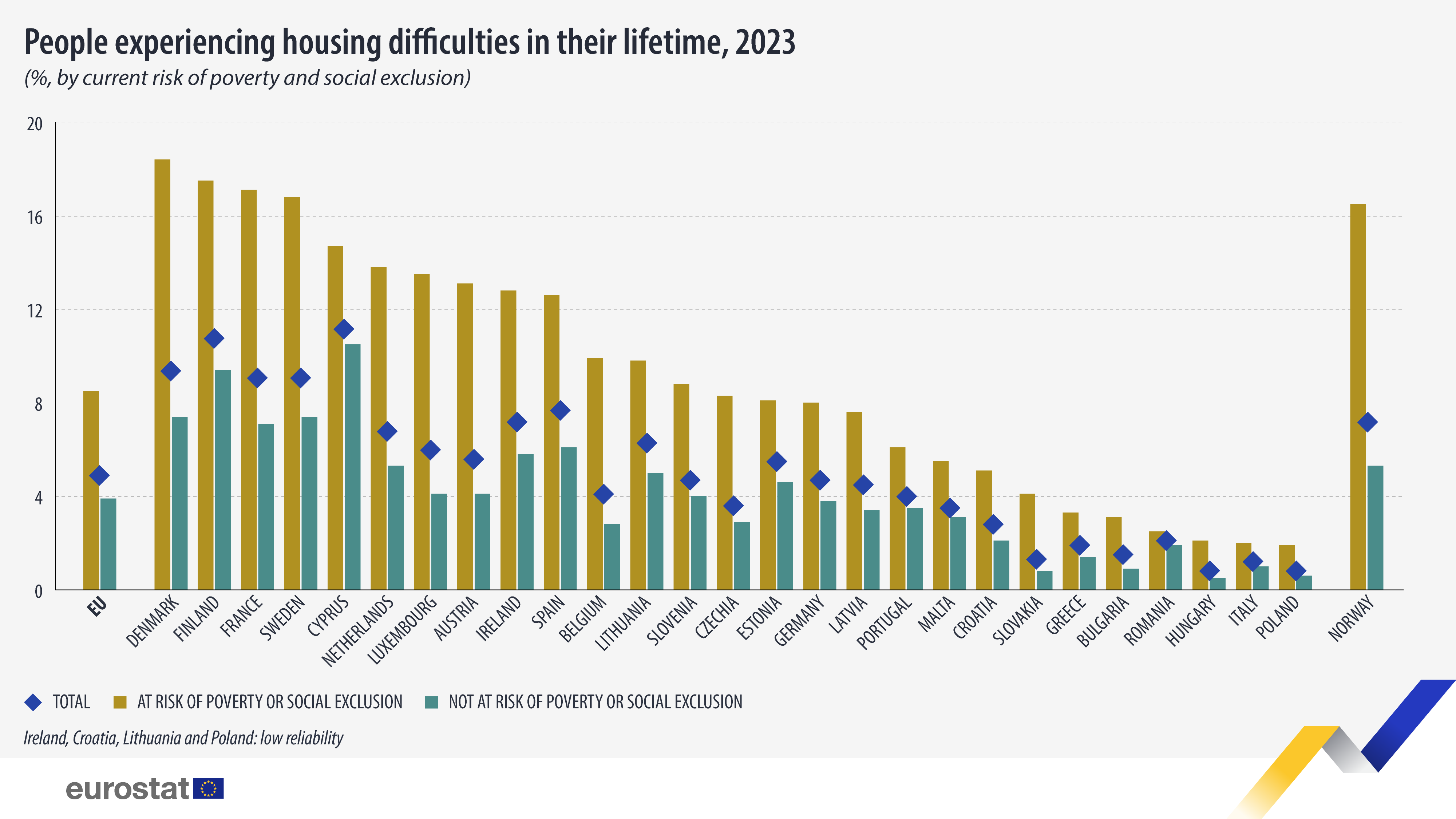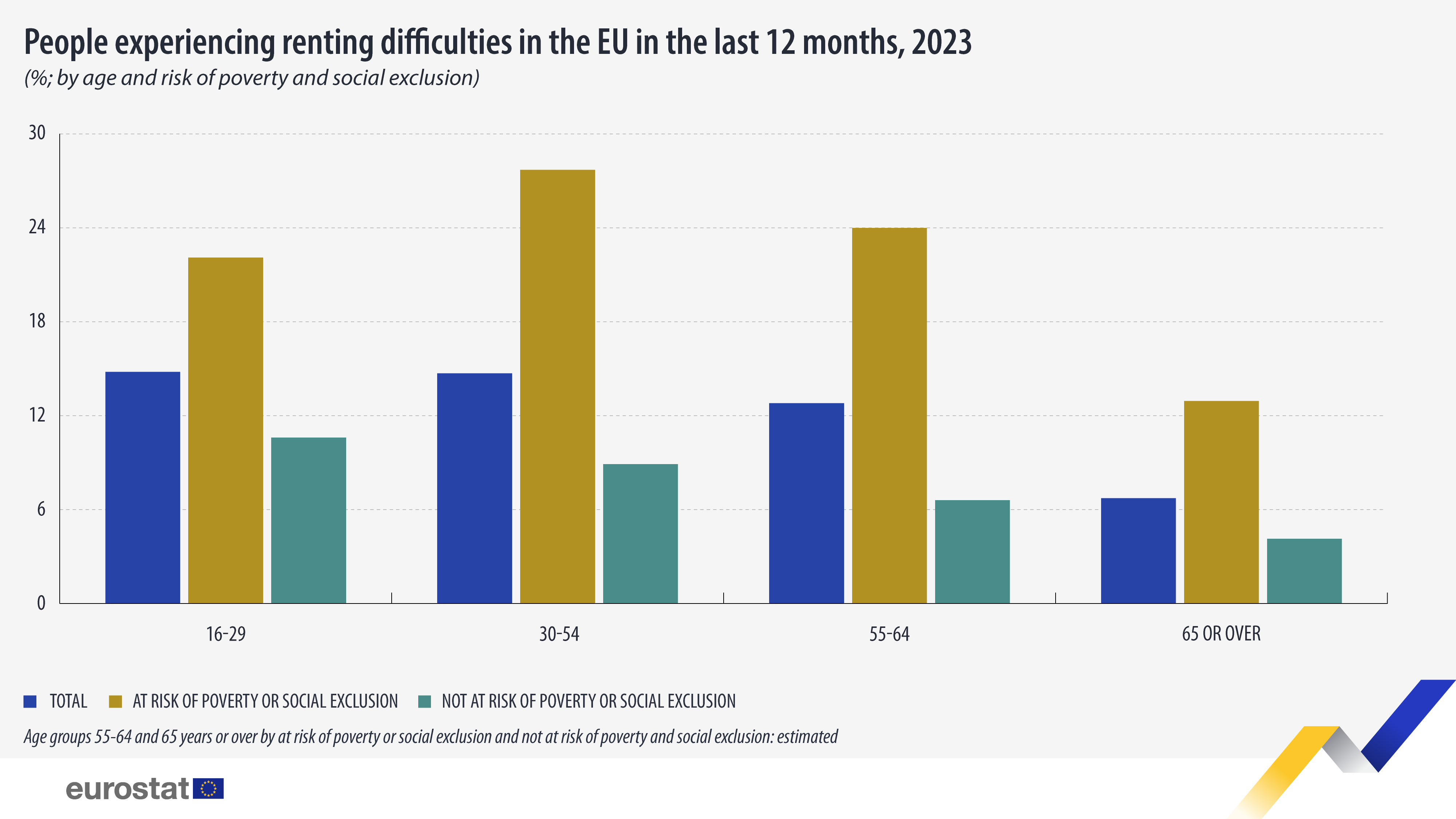Housing & renting difficulties: what is the EU’s situation?

In 2023, across the EU, approximately 4.9% of people aged 16 or over reported experiencing housing difficulties in their lifetime (situation when a person had no place of their own and was forced to stay in a temporary accommodation). This percentage was significantly higher for people at risk of poverty or social exclusion (8.5%). On the other hand, only 3.9% of people not at risk of poverty or social exclusion reported facing housing difficulties in their lifetime.
EU countries with the highest rates of housing difficulties among those at risk of poverty or social exclusion were Denmark (18.4%), Finland (17.5%) and France (17.1%). In contrast, the lowest rates were observed in Poland (1.9%), Italy (2.0%) and Hungary (2.1%).
Source dataset: ilc_lvhd01
People aged 65 and over reported the lowest rates of renting difficulties
At EU level, people aged 16 to 29 and 30 to 54 reported the highest rates of renting difficulties, 14.8% and 14.7%, respectively, while this rate decreased to 12.8% for those aged 55 to 64 and 6.7% for people aged 65 years or over.
Data show that people at risk of poverty or social exclusion at all ages suffer the most from renting difficulties. However, this pattern decreases with age.
When looking at people at risk of poverty or social exclusion, renting difficulties were higher at 27.7% for people aged 30-54 years, followed by 24.0% for people aged 55 to 64 and 22.1% for those 16 to 29 years. Among those aged 65 years or older, 12.9% of those at risk of poverty or social exclusion reported having renting difficulties, the lowest share.
Source dataset: ilc_lvhd08
For more information
- Statistics Explained article on living conditions in Europe - housing and renting difficulties
- Thematic section on income and living conditions
- Database on income and living conditions
Methodological notes
- Housing difficulties are defined as situations where a person had no place of their own (either owned or rented) and was forced to stay with friends or family, use emergency or temporary accommodation, live in a place not intended as a permanent home, or sleep in a public space. Temporary displacement due to unforeseen events, such as natural disasters or emergencies, is not considered housing difficulties if the person still had a permanent residence (either owned or rented) to return to.
- Renting difficulties occur when an individual is unable to cover the cost of their accommodation, during the last 12 months, using their own resources, without having to borrow money, take out a loan, or resort to other financial means to pay their rent.
- The EU-SILC six yearly module intergenerational transmission of disadvantages and housing difficulties collects information on different aspects of having experienced past housing difficulties in a person’s lifetime, including reasons for such difficulties, duration of the most recent experience, and how individuals overcame these challenges, as well as specific questions on renting difficulties.
If you have any queries, please visit our contact us page.


